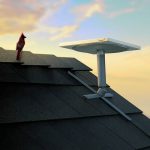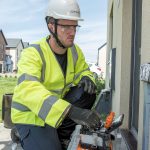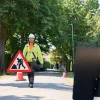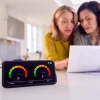Ericsson Tries to Bust the Top 4 Myths of 5G Mobile Technology
Mobile and telecoms kit maker Ericsson has today published a new report that attempts to debunk what they perceive to be as the top four myths surrounding the value of future 5G based mobile and mobile broadband technology for consumers. Obviously, there are vested interests at work.
Few would probably disagree that 5G has at times suffered from excessive hype, which in some cases may have resulted in the network upgrade being attributed overly inflated magical powers (here). The challenge is that a lot of what 5G can do is often possible via existing 4G networks too, although the faster latency, significantly improved spectrum capacity / management and potential for multi-Gigabit speeds does mean that 5G is a major upgrade.
Some operators, such as Three UK, are even positioned to harness 5G technology in order to deliver ultrafast (100Mbps+) capable home broadband ISP packages that could conceivably erode some of the existing market for fixed line services. At least until the FTTH roll-out matures enough to balance the books again, but we’ll have to see how the first packages and coverage compare before casting judgement on that.
Advertisement
Today’s report from Ericsson similarly notes that many fixed line broadband consumers are dissatisfied with their service, due primarily to issues of cost and unreliable speeds or connectivity. The report notes that 30% of people could switch ISP in the next six months, while a further 15% would switch if there was a better alternative.
Among those looking to switch, 8 in 10 are said to be interested in a 5G home wireless broadband offering to replace or supplement their existing home broadband service. However we do wonder, as hinted earlier, how these figures might change once FTTH/P becomes more widespread.

Overall it’s clear that 5G offers some very real benefits, even if it’s probably not going to produce the sort of seismic shift that some politicians and corners of the industry have predicted, at least not immediately. Nevertheless Ericsson believes it necessary to combat some of the 5G naysayers and so they’ve concocted a list of seemingly associated myths to debunk. Make of these what you will and check out of the full report.
Advertisement
Top 4 Myths Surrounding the Value of 5G to Consumers
Myth 1: There are no near-term consumer benefits of 5G
Reality
Consumers expect 5G to offer a step change in network performance, relief from urban network congestion and more home broadband choices as near-term benefits.
– Half of smartphone users in South Korea and Australia, and two in five in the US, claim mobile broadband speeds are not fast enough.
– Urban network congestion is visible to consumers in megacities; 6 in 10 in mega/metro cities globally face most issues in crowded areas and would like 5G to be deployed first in such areas.
– Consumers expect more home broadband choices; half of those interested in 5G home wireless broadband are either dissatisfied with their existing provider or lack broadband choices.
Myth 2: There are no real use cases for, or price premium on, 5G.
Reality
Consumers see value in 5G services and expect most use cases to go mainstream within 2 to 3 years of 5G’s launch – 67 percent say they are willing to pay for them.
– Consumers in the US would prefer to cut the cord from cable TV and instead use streaming services via 5G; Chinese consumers expect to live in a 5G-connected smart home; and South Korean consumers would love to go shopping in mobile VR.
– Smartphone users say they are willing to pay a 20 percent premium for 5G, and early adopters as much as 32 percent. However, higher internet speed alone won’t be enough: 4 in 10 high-spenders expect new apps and services from their 5G plan.
Myth 3: Smartphones are the only solution for 5G.
Reality
Smartphones alone are unlikely to drive 5G adoption.
– Of those who have a recent iPhone model, 43 percent doubt whether the form factors and features of today’s smartphones can best take advantage of 5G.
– Current smartphones should evolve; 4 in 10 expect foldable screens, holographic projection and 360-degree cameras as features on upcoming 5G devices.
– Globally half of all consumers agree that smartphones will still exist but that we will all be wearing augmented reality (AR) smart glasses in the next five years.
Myth 4: Current usage patterns accurately predict future demand.
Reality
Consumers themselves predict massive changes in future usage on 5G, with video consumption set to peak.
– Three hours’ more video content will be consumed on mobile devices weekly when away from home, of which one hour will be on AR/VR glasses in a 5G future.
– Half of all users expect their mobile cellular data usage to increase significantly on 5G, and 1 in 5 could see an increase of 10 times, with usage of 200GB per month.
– For 6 in 10, 5G-connected home robots will be a status symbol, while 4 in 10 expect access to 5G in the car to be as important as fuel efficiency and engine power in the next 5 years.
The language of absolutes used in Myth 1 and 2 are unnecessary since of course there will be consumer benefits and use cases for 5G (to say otherwise is silly), although natural network migration will eventually bring many of these to everybody. On the other hand it remains to be seen how consumers will actually react in the real-world to 5G and what kind of plans will be offered, which makes it difficult to bank on any one particular prediction.
Similarly Myth 3 seems immediately irrelevant because of the possibility for 5G to offer a much more competitive home broadband alternative (4G could do this too but performance has often been a mixed bag). Meanwhile the mention of holographic projection seems interesting, albeit perhaps a bit more into the futurologist territory than that of a viable forecast for economic or consumer benefit.
Likewise South Koreans may love to go shopping in mobile VR (Myth 1), but we’re not sure how many others would and a good fixed line broadband service could easily do this and TV connectivity too. You’re perhaps unlikely to be wondering around outside of the home via 5G with a VR headset on, mainly because you’d look like a burk and would be falling over everything (mark this one under niche interest).
Finally we have Myth 4, which seems open to interpretation given that there are lots of different ways for predicting future demand and those can easily end up being quite wide of the mark (always take with a pinch of salt). For example, the fact that extra mobile video content will be consumed must be balanced against on-going improvements to video compression (i.e. less speed for better quality). Plus there’s not a lot of point in video quality above 2K resolution on a small Smartphone display and phones will often auto-select the most appropriate resolution when watching such content.
Advertisement
Mark is a professional technology writer, IT consultant and computer engineer from Dorset (England), he also founded ISPreview in 1999 and enjoys analysing the latest telecoms and broadband developments. Find me on X (Twitter), Mastodon, Facebook, BlueSky, Threads.net and Linkedin.
« 13% of New Build Homes in Scotland Ignore Openreach’s FTTP
Trunk Networks Launches UK ISP for Multiplayer Video Gamers »


















































Comments are closed